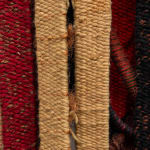![Norberto Nicola, Sem título [Untitled], Década de 1980 [1980's]](https://artlogic-res.cloudinary.com/w_1800,h_1320,c_limit,f_auto,fl_lossy,q_auto/artlogicstorage/bergaminandgomide/images/view/1ca20698cc73ba9b1150493cf67c533bj/gomide-co-norberto-nicola-sem-t-tulo-untitled-d-cada-de-1980-1980-s.jpg) Photo: Ding Musa
Photo: Ding Musa
![Norberto Nicola, Sem título [Untitled], Década de 1980 [1980's]](https://artlogic-res.cloudinary.com/w_1800,h_1320,c_limit,f_auto,fl_lossy,q_auto/artlogicstorage/bergaminandgomide/images/view/1ef11f79af01ba9fddf767cf66c52937j/gomide-co-norberto-nicola-sem-t-tulo-untitled-d-cada-de-1980-1980-s.jpg) Photo: Ding Musa
Photo: Ding Musa
![Norberto Nicola, Sem título [Untitled], Década de 1980 [1980's]](https://artlogic-res.cloudinary.com/w_1800,h_1320,c_limit,f_auto,fl_lossy,q_auto/artlogicstorage/bergaminandgomide/images/view/649efbf7b0a68754ff6dbedf68d36fd4j/gomide-co-norberto-nicola-sem-t-tulo-untitled-d-cada-de-1980-1980-s.jpg) Photo: Ding Musa
Photo: Ding Musa
![Norberto Nicola, Sem título [Untitled], Década de 1980 [1980's]](https://artlogic-res.cloudinary.com/w_1800,h_1320,c_limit,f_auto,fl_lossy,q_auto/artlogicstorage/bergaminandgomide/images/view/737a12eb5fd7afdf19b7436fa9e24979j/gomide-co-norberto-nicola-sem-t-tulo-untitled-d-cada-de-1980-1980-s.jpg) Photo: Ding Musa
Photo: Ding Musa
Norberto Nicola 1930-2007
Further images
PT
"Tentamos dar à tapeçaria uma nova dimensão criativa. A tapeçaria que buscamos afasta-se da ideia tradicional de uma representação plana. Criamos um objeto tecido. A reforma de Lurçat foi unicamente uma reconsideração da arte do plano, com uma técnica (a tecelagem) e um material (a lã) específicos. Trata-se agora de criar uma arte da fibra tecida, libertada de qualquer ligação com as artes de superfície pintada. A fibra e o tecido possuem um volume com qualidades próprias de tensão, elasticidade, comportamento, enfim um lugar no espaço. A cor é um atributo da matéria, mas por esta retida. A obra tecida deve modelar o espaço numa forma multidimensional."
Formas Tecidas, Galeria Documenta, São Paulo, 1969
As técnicas de tapeçaria decorativa foram iniciadas no Brasil na década de 1940 com a Tapetes Regina Ltda., de propriedade de Regina Graz, onde cerca de trinta tecedeiras trabalhavam produzindo colchas, tapetes e cortinas. No entanto, a tapeçaria moderna, caracterizada como uma linguagem artística, nasceu em 1953 no estúdio de Genaro de Carvalho, na Bahia. Em 1959, Norberto Nicola e Jacques Douchez (1921-2012) fundaram o Atelier Douchez-Nicola, onde a melhor tecelã de Regina, Gertrude, foi trabalhar. Em 1969, apresentaram a exposição Formas Tecidas na Galeria Documenta, em São Paulo, que esboça uma incursão na tridimensionalidade das tapeçarias acompanhadas de um manifesto.
O Atelier Douchez-Nicola era um espaço onde ambos os artistas podiam transitar entre campos bidimensionais e tridimensionais, sempre informados por um horizonte visual definido e um contexto físico. Suas peças são desenvolvidas em torno da delimitação de um campo espacial, ainda que reclamem espaço para respiro. Após a dissolução do Atelier em 1980, Norberto Nicola produziu em seu estúdio, localizado em sua casa no centro de São Paulo. O espaço ganhou reconhecimento por ser um ponto de encontro no mundo artístico. A casa representava uma espécie de extensão de seu corpo e mente – quando visitada, podia-se entender o fascínio que Nicola tinha por coisas singulares e detalhadas que a humanidade produziu.
Suas peças são tectônicas e investem na espessura dos fios, propondo texturas às vezes sutis, outras vezes maciças – corpos em movimento conduzidos pela cor e pelo material. "Para mim, a cor é o caminho para o visceral. A cor é impossível de racionalizar. Enquanto a forma pode ser racionalizada e apreendida, a cor não pode. Portanto, ou você tem um senso de cor, ou definitivamente não tem. Eu sou um homem que vive com os olhos". Liberto do desenho e da planicidade, Nicola sugeriu uma nova intimidade com a fabricação de tapeçarias que incorporou uma trama ativa de materiais.
EN
"We attempt to give tapestry a new creative dimension. The tapestry we seek moves away from the traditional idea of flat representation. We create a woven object. Lurçat's reform was merely a re-evaluation of two-dimensional art, with a specific technique (weaving) and material (wool). Now it is about creating an art of woven fiber, freed from all bonds with the arts of painted surfaces. Fiber and fabric have volume with their own qualities of tension, elasticity, behavior, anyway a place in space. Color is an attribute of matter, but withheld by it. The woven work must model space in a multidimensional form."
Woven Shapes, Galeria Documenta, São Paulo, 1969
Decorative tapestry techniques started in Brazil in the 1940s with Tapetes Regina Ltda., owned by Regina Graz, where about thirty female weavers worked producing bedspreads, rugs, and curtains. However, modern tapestry, characterized as an artistic language, was born in 1953 in Genaro de Carvalho's studio in Bahia. In 1959, Norberto Nicola and Jacques Douchez (1921-2012) founded the Atelier Douchez-Nicola, where Regina’s best weaver, Gertrude, came to work. In 1969, they presented the exhibition Formas Tecidas [Woven Forms] at Galeria Documenta, in São Paulo, which outlines an incursion into the three-dimensionality of tapestries accompanied by a manifesto.
The Atelier Douchez-Nicola was a space where both artists could transit between bidimensional and tridimensional fields, always informed by a defined visual cone and a physical context. Their pieces are developed around the definition of a spatial domain, even though they claim breathing space. After the dissolution of the Atelier in 1980, Norberto Nicola produced in his studio, located inside his home in downtown São Paulo. The space gained recognition for being a meeting place in the artistic world. The house represented a kind of extension of his body and mind – when visiting, one could understand the fascination that Nicola had for singular and detailed things that humanity has produced.
His pieces are tectonic and invested in the thickness of the threads, proposing textures that are sometimes subtle, other times massive – bodies in motion, conducted by color and the material. "For me, color is the way to go to the visceral. Color is impossible to rationalize. While the form can be rationalized and apprehended, color cannot. So you either have a sense of color, or you definitely don’t. I am a man who lives with his eyes". Freed from drawing and flatness, Nicola then suggested a fresh intimacy with the manufacturing of tapestries that incorporated an active weave of materials.
Exhibitions
Crossings. Kasmin: New York, 27 de junho a 16 de agosto de 2024 [June 27th to August 16th, 2024]
Join our mailing list
*required fields
We will process the personal data you have supplied in accordance with our privacy policy (available on request). You can unsubscribe or change your preferences at any time by clicking the link in our emails.



